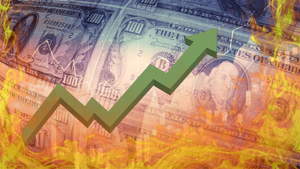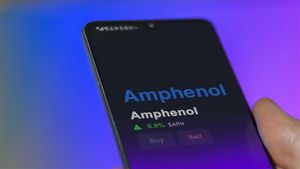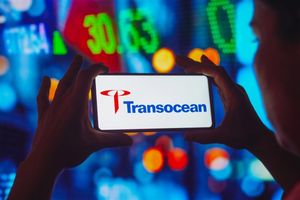Financial News
First Trust Introduces its First Max Buffer ETF: FT Vest U.S. Equity Max Buffer ETF – March (MARM)
- MARM, the first ETF in the new Max Buffer series, utilizes Vest’s proprietary Target Outcome Strategy® seeking to provide the maximum available buffer against the losses of the underlying ETF with a predetermined upside cap
- The fund joins First Trust’s lineup of successful and fast-growing actively managed Buffer ETFs
First Trust Advisors L.P. (“First Trust”) a leading exchange-traded fund (“ETF”) provider and asset manager, announced today that it has launched the Max Buffer ETF Series of Target Outcome ETFs®: the FT Vest U.S. Equity Max Buffer ETF - March (Cboe: MARM) (the “fund”). The fund is the latest addition to First Trust’s suite of Target Outcome ETFs®, which has over $18 billion in total net assets for the product line as of 2/29/24 and is among the fastest growing in the outcome oriented ETFs space.
“With the launch of MARM, we continue to expand our lineup of First Trust Target Outcome ETFs, providing a broader range of tools for investment professionals seeking to help their clients stay invested in stocks while addressing some of their downside risk,” said Ryan Issakainen, CFA, Senior Vice President, ETF Strategist at First Trust.
The fund seeks an outcome that provides investors with returns (before fees and expenses) that match the price return of the SPDR® S&P 500® ETF Trust (“SPY” or “underlying ETF”), up to a predetermined upside cap, while seeking to provide the maximum available buffer (before fees and expenses) against potential SPY losses over an approximate period of one year. The fund seeks to provide the maximum available buffer against losses while setting the predetermined upside cap of at least 7%. The buffer for the initial period is expected to be 100%, however, the expected range of the buffer for future periods is between 20% and 100%:
- If the fund is not able to set the buffer against 100% of the underlying ETF losses while setting a cap of at least 7%, then it would seek the maximum buffer that allows for a cap of 7%.
- If the fund can set the buffer against 100% of the underlying ETF losses while setting a cap of at least 7%, it will seek a predetermined cap that exceeds 7%.
- If the 7% minimum cap produces a buffer of less than 20%, the fund will seek to lower the minimum cap to provide a buffer of at least 20%.
If an investor purchases shares after the first day of the Target Outcome Period, they will likely have a different return potential and buffer than an investor who purchased shares at the start of the Target Outcome Period and the buffer the fund seeks may not be available. At the end of the Target Outcome Period, the upside cap and downside buffer for the new Target Outcome Period are reset to prevailing market conditions. The fund has a perpetual structure and may be held indefinitely, providing investors a buy and hold investment opportunity.
The fund is managed and sub-advised by Vest Financial LLC (“Vest”) using a “target outcome strategy” or pre-determined target investment outcome. Vest is the creator of Target Outcome Investments® and manager of the longest running buffer strategy fund.
“Today’s launch of MARM satisfies a demand from investors looking to fine-tune their risk management plan with the deepest buffer level we offer over a one year period, while also participating in potential market appreciation up to a cap,” said Jeff Chang, President of Vest.
Karan Sood and Howard Rubin, of Vest, will serve as portfolio managers for the fund. The portfolio managers are jointly and primarily responsible for the day-to-day management of the fund.
For more information about First Trust, please contact Ryan Issakainen at (630) 765-8689 or RIssakainen@FTAdvisors.com.
About First Trust
First Trust is a federally registered investment advisor and serves as the funds’ investment advisor. First Trust and its affiliate First Trust Portfolios L.P. (“FTP”), a FINRA registered broker-dealer, are privately held companies that provide a variety of investment services. First Trust has collective assets under management or supervision of approximately $218 billion as of February 29, 2024, through unit investment trusts, exchange-traded funds, closed-end funds, mutual funds and separate managed accounts. First Trust is the supervisor of the First Trust unit investment trusts, while FTP is the sponsor. FTP is also a distributor of mutual fund shares and exchange-traded fund creation units. First Trust and FTP are based in Wheaton, Illinois. For more information, visit www.ftportfolios.com.
About Vest:
Vest is the creator of Target Outcome Investments®, which strive to buffer losses, manage volatility, amplify gains or provide consistent income to a diverse spectrum of investors. Today, Vest’s Target Outcome Strategies® are available in mutual funds, exchange-traded funds (ETFs), unit investment trusts (UITs), collective investment trusts (CITs), variable insurance trusts (VITs) and customizable managed accounts/sub-advisory services. For more information visit www.vestfin.com or contact Linda Werner at lwerner@vestfin.com or 703-864-5483.
###
You should consider the fund’s investment objectives, risks, and charges and expenses carefully before investing. Contact First Trust Portfolios L.P. at 1-800-621-1675 or visit www.ftportfolios.com to obtain a prospectus or summary prospectus which contains this and other information about the fund. The prospectus or summary prospectus should be read carefully before investing.
Risk Considerations
You could lose money by investing in a fund. An investment in a fund is not a deposit of a bank and is not insured or guaranteed. There can be no assurance that a fund’s objective(s) will be achieved. Investors buying or selling shares on the secondary market may incur customary brokerage commissions. Please refer to each fund’s prospectus and Statement of Additional Information for additional details on a fund’s risks. The order of the below risk factors does not indicate the significance of any particular risk factor.
There can be no assurance that an active trading market for fund shares will develop or be maintained.
Unlike mutual funds, shares of the fund may only be redeemed directly from a fund by authorized participants in very large creation/redemption units. If a fund's authorized participants are unable to proceed with creation/redemption orders and no other authorized participant is able to step forward to create or redeem, fund shares may trade at a premium or discount to a fund's net asset value and possibly face delisting and the bid/ask spread may widen.
A new buffer is established at the beginning of each Target Outcome Period and is dependent on prevailing market conditions. As a result, the buffer may rise or fall from one Target Outcome Period to the next and is unlikely to remain the same for consecutive Target Outcome Periods.
A fund that uses FLexible EXchange Options (“FLEX Options”) to employ a “target outcome strategy” has characteristics unlike many other traditional investment products and may not be appropriate for all investors. There can be no guarantee that a target outcome fund will be successful in its strategy to buffer against losses. A shareholder may lose their entire investment. In the event an investor purchases shares after the first day of the target outcome period defined in the fund’s prospectus (“Target Outcome Period”) or sells shares prior to the end of the Target Outcome Period, the buffer that a fund seeks to provide may not be available.
A new cap is established at the beginning of each Target Outcome Period and is dependent on prevailing market conditions. As a result, the cap may rise or fall from one Target Outcome Period to the next and is unlikely to remain the same for consecutive Target Outcome Periods.
A target outcome fund will not participate in gains beyond the cap. In the event an investor purchases fund shares after the first day of a Target Outcome Period and the fund has risen in value to a level near the cap, there may be little or no ability for that investor to experience an investment gain on their fund shares; however, the investor will remain vulnerable to downside risk.
Since at the end of each Target Outcome Period a new cap and buffer are established based on the then current price of the underlying ETF, an investor who holds fund shares through multiple Target Outcome Periods may fail to experience gains comparable to the underlying ETF over time or recapture losses from prior Target Outcome Periods and may have losses that exceed those of the underlying ETF.
A fund that effects all or a portion of its creations and redemptions for cash rather than in-kind may be less tax-efficient.
A fund may be subject to the risk that a counterparty will not fulfill its obligations which may result in significant financial loss to a fund.
Current market conditions risk is the risk that a particular investment, or shares of the fund in general, may fall in value due to current market conditions. As a means to fight inflation, the Federal Reserve and certain foreign central banks have raised interest rates and expect to continue to do so, and the Federal Reserve has announced that it intends to reverse previously implemented quantitative easing. Recent and potential future bank failures could result in disruption to the broader banking industry or markets generally and reduce confidence in financial institutions and the economy as a whole, which may also heighten market volatility and reduce liquidity. Ongoing armed conflicts between Russia and Ukraine in Europe and among Israel, Hamas and other militant groups in the Middle East, have caused and could continue to cause significant market disruptions and volatility within the markets in Russia, Europe, the Middle East and the United States. The hostilities and sanctions resulting from those hostilities have and could continue to have a significant impact on certain fund investments as well as fund performance and liquidity. The COVID-19 global pandemic, or any future public health crisis, and the ensuing policies enacted by governments and central banks have caused and may continue to cause significant volatility and uncertainty in global financial markets, negatively impacting global growth prospects.
A fund is susceptible to operational risks through breaches in cyber security. Such events could cause a fund to incur regulatory penalties, reputational damage, additional compliance costs associated with corrective measures and/or financial loss.
Trading FLEX Options involves risks different from, or possibly greater than, the risks associated with investing directly in securities. A fund may experience substantial downside from specific FLEX Option positions and certain FLEX Option positions may expire worthless. There can be no guarantee that a liquid secondary trading market will exist for the FLEX Options and FLEX options may be less liquid than exchange-traded options.
FLEX Options are subject to correlation risk and a FLEX Option's value may be highly volatile, and may fluctuate substantially during a short period of time. FLEX Options will be exercisable at the strike price only on their expiration date. Prior to the expiration date, the value of the FLEX Options will be determined based upon market quotations or other recognized pricing methods. In the absence of readily available market quotations for fund holdings, a fund's advisor may determine the fair value of the holding, which requires the advisor's judgement and is subject to the risk of mispricing or improper valuation.
A fund may be a constituent of one or more indices or models which could greatly affect a fund's trading activity, size and volatility.
Information technology companies are subject to certain risks, including rapidly changing technologies, short product life cycles, fierce competition, aggressive pricing and reduced profit margins, loss of patent, copyright and trademark protections, cyclical market patterns, evolving industry standards and regulation and frequent new product introductions.
Large capitalization companies may grow at a slower rate than the overall market.
The portfolio managers of an actively managed portfolio will apply investment techniques and risk analyses that may not have the desired result.
Market risk is the risk that a particular security, or shares of a fund in general may fall in value. Securities are subject to market fluctuations caused by such factors as general economic conditions, political events, regulatory or market developments, changes in interest rates and perceived trends in securities prices. Shares of a fund could decline in value or underperform other investments as a result. In addition, local, regional or global events such as war, acts of terrorism, spread of infectious disease or other public health issues, recessions, natural disasters or other events could have significant negative impact on a fund.
A fund faces numerous market trading risks, including the potential lack of an active market for fund shares due to a limited number of market makers. Decisions by market makers or authorized participants to reduce their role or step away in times of market stress could inhibit the effectiveness of the arbitrage process in maintaining the relationship between the underlying values of a fund's portfolio securities and a fund's market price.
Large inflows and outflows may impact a new fund's market exposure for limited periods of time.
A fund classified as "non-diversified" may invest a relatively high percentage of its assets in a limited number of issuers. As a result, a fund may be more susceptible to a single adverse economic or regulatory occurrence affecting one or more of these issuers, experience increased volatility and be highly concentrated in certain issuers.
A fund and a fund's advisor may seek to reduce various operational risks through controls and procedures, but it is not possible to completely protect against such risks. The fund also relies on third parties for a range of services, including custody, and any delay or failure related to those services may affect the fund's ability to meet its objective.
The prices of options are volatile and the effective use of options depends on a fund's ability to terminate option positions at times deemed desirable to do so. There is no assurance that a fund will be able to effect closing transactions at any particular time or at an acceptable price.
The market price of a fund's shares will generally fluctuate in accordance with changes in the fund's net asset value ("NAV") as well as the relative supply of and demand for shares on the exchange, and a fund's investment advisor cannot predict whether shares will trade below, at or above their NAV.
A fund with significant exposure to a single asset class, country, region, industry, or sector may be more affected by an adverse economic or political development than a broadly diversified fund.
If, in any year, a fund which intends to qualify as a Registered Investment Company (RIC) under the applicable tax laws fails to do so, it would be taxed as an ordinary corporation.
A target outcome fund's investment strategy is designed to deliver returns if shares are bought on the first day that the fund enters into the FLEX Options and are held until the FLEX Options expire at the end of the Target Outcome Period subject to the cap.
If, in any year, a fund which intends to qualify as a Registered Investment Company (RIC) under the applicable tax laws fails to do so, it would be taxed as an ordinary corporation.
Trading on an exchange may be halted due to market conditions or other reasons. There can be no assurance that a fund's requirements to maintain the exchange listing will continue to be met or be unchanged.
A fund that invests in FLEX Options that reference an ETF is subject to certain of the risks of owning shares of an ETF as well as the risks of the types of instruments in which the reference ETF invests.
An underlying ETF with investments that are concentrated in a single asset class, country, region, industry, or sector may be more affected by adverse events than the market as a whole.
A fund that invests in FLEX Options that reference an ETF has exposure to the equity securities market. Equity securities may decline significantly in price over short or extended periods of time, and such declines may occur in the equity market as a whole, or they may occur in only a particular country, company, industry or sector of the market.
First Trust Advisors L.P. (FTA) is the adviser to the First Trust fund(s). FTA is an affiliate of First Trust Portfolios L.P., the distributor of the fund(s).
The information presented is not intended to constitute an investment recommendation for, or advice to, any specific person. By providing this information, First Trust is not undertaking to give advice in any fiduciary capacity within the meaning of ERISA, the Internal Revenue Code or any other regulatory framework. Financial professionals are responsible for evaluating investment risks independently and for exercising independent judgment in determining whether investments are appropriate for their clients.
The Target Outcome registered trademarks are registered trademarks of Vest Financial LLC.
The fund is not sponsored, endorsed, sold or promoted by SPDR® S&P 500® ETF Trust, PDR, or Standard & Poor's® (together with their affiliates hereinafter referred to as the "Corporations"). The Corporations have not passed on the legality or suitability of, or the accuracy or adequacy of, descriptions and disclosures relating to the fund or the FLEX Options. The Corporations make no representations or warranties, express or implied, regarding the advisability of investing in the fund or the FLEX Options or results to be obtained by the fund or the FLEX Options, shareholders or any other person or entity from use of the SPDR® S&P 500® ETF Trust. The Corporations have no liability in connection with the management, administration, marketing or trading of the fund or the FLEX Options.
View source version on businesswire.com: https://www.businesswire.com/news/home/20240327617912/en/
Contacts
Ryan Issakainen
First Trust
(630) 765-8689
RIssakainen@FTAdvisors.com
More News
View More





Quotes delayed at least 20 minutes.
By accessing this page, you agree to the following
Privacy Policy and Terms Of Service.



